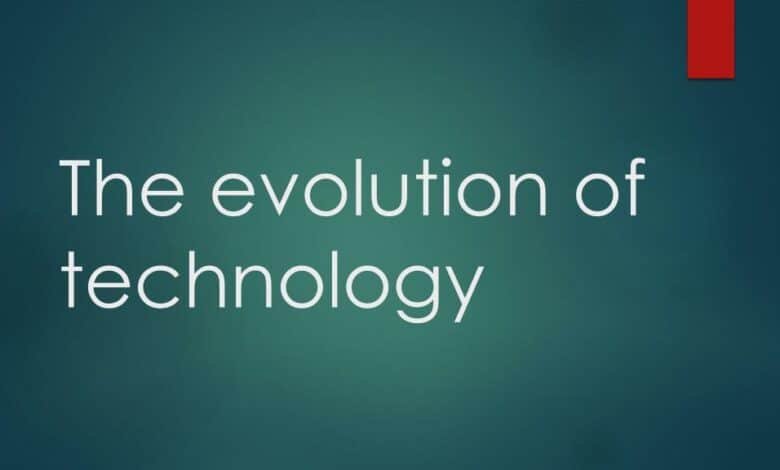The Evolution of Technology: A Comprehensive Timeline of 2024

The Evolution of Technology. The journey of technology is a testament to human ingenuity, marked by groundbreaking inventions and innovations that have reshaped societies and economies. This article explores significant milestones in technology from the 15th century to 2024, highlighting key developments and their impacts on our lives. The Evolution of Technology
The Renaissance: The Dawn of Modern Technology (1450-1600)
Printing Press Revolution (1440)
In the mid-15th century, Johannes Gutenberg introduced the printing press, a pivotal invention that transformed the dissemination of information. This technology facilitated the spread of ideas, leading to increased literacy rates and the eventual rise of the Enlightenment.
Advances in Navigation (15th-16th Century)
During the Age of Exploration, technological advancements in navigation, such as the astrolabe and improved ship designs, allowed explorers like Columbus and Magellan to traverse uncharted waters. These innovations not only expanded geographical knowledge but also established new trade routes.
The Industrial Revolution: The Birth of Modern Industry (1760-1840)
Steam Engine (1712)
While invented earlier, James Watt’s improvements to the steam engine in the late 18th century catalyzed the Industrial Revolution. This innovation powered factories, transformed transportation with steam locomotives, and significantly increased production capabilities.
Spinning Jenny (1764)
Invented by James Hargreaves, the Spinning Jenny revolutionized the textile industry by enabling the simultaneous spinning of multiple threads. This innovation drastically increased textile production, contributing to the growth of factories and urbanization.
The Age of Electricity and Communication (19th Century)
Telegraph (1837)
Samuel Morse’s development of the telegraph revolutionized long-distance communication. It allowed for near-instantaneous transmission of messages, facilitating business transactions and news dissemination across vast distances. The Evolution of Technology
The Light Bulb (1879)
Thomas Edison’s creation of the practical incandescent light bulb revolutionized how people lived and worked after dark. This innovation led to the electrification of homes and industries, fundamentally altering daily life.
The 20th Century: The Age of Information and Electronics
The First Computer (1945)
The Electronic Numerical Integrator and Computer (ENIAC) marked the beginning of the computer age. Initially used for military calculations, its development laid the groundwork for future computing technologies.
The Internet (1960s-1990s)
Originally a military project, ARPANET evolved into the modern internet by the late 20th century. Its commercialization in the 1990s transformed communication, business, and entertainment, leading to the information age.
Mobile Phones (1980s)
The introduction of mobile phones revolutionized communication by enabling people to connect anytime, anywhere. From bulky analog devices to sleek smartphones, mobile technology has evolved dramatically, integrating various functions beyond voice calls. The Evolution of Technology
The Digital Revolution: The Rise of Personal Technology (2000-2020)
Social Media (2004-Present)
Platforms like Facebook, Twitter, and Instagram have changed how people interact and share information. Social media has become a powerful tool for communication, marketing, and social movements, shaping public discourse in unprecedented ways. The Evolution of Technology
Cloud Computing (2006)
With the launch of services like Amazon Web Services, cloud computing transformed how businesses and individuals store and access data. This technology facilitated remote work and collaboration, making data accessible from anywhere in the world.
Artificial Intelligence (2010s)
AI began to permeate everyday life, with applications ranging from virtual assistants like Siri and Alexa to machine learning algorithms that power recommendation systems. This technology has had significant implications for industries, The Evolution of Technology
The Current Landscape: Technology in 2024
Quantum Computing (2020s)
As of 2024, quantum computing is on the cusp of becoming mainstream. Companies like IBM and Google are making strides in developing quantum computers that can solve complex problems exponentially faster than traditional computers, opening new frontiers in research and cryptography.
5G Technology (2020s)
The rollout of 5G networks has transformed mobile connectivity. With higher speeds and lower latency, 5G enables advancements in IoT (Internet of Things), smart cities, and autonomous vehicles, paving the way for a more connected world.
Renewable Energy Technologies (2020s)
With the growing urgency of climate change, renewable energy technologies like solar panels and wind turbines have advanced significantly. By 2024, innovations in energy storage and grid management are enabling a more sustainable energy landscape, reducing reliance on fossil fuels.
The Rise of Augmented and Virtual Reality (2020s)
Augmented Reality (AR) and Virtual Reality (VR) technologies have seen remarkable growth. From gaming to training simulations, these immersive experiences are reshaping how we interact with the digital world. By 2024, industries are leveraging AR/VR for everything from education to remote work.
Challenges and Considerations
Cybersecurity Threats
As technology becomes more integrated into our lives, cybersecurity threats have escalated. In 2024, individuals and organizations face significant challenges in protecting sensitive data from increasingly sophisticated cyberattacks. The Evolution of Technology
Ethical Implications of AI
The rise of AI technologies raises important ethical questions regarding privacy, bias, and job displacement. As we move forward, addressing these issues will be crucial in ensuring technology benefits society as a whole.
Digital Divide
Despite the advancements, disparities in access to technology remain a pressing issue. Bridging the digital divide is essential to ensure equitable opportunities for all, particularly in education and employment.
Conclusion: Looking Ahead
The timeline of technology from 1450 to 2024 illustrates an incredible journey of innovation and transformation. As we look to the future, it’s clear that technological advancements will continue to shape our lives in profound ways. Embracing these changes while addressing the challenges they bring will be critical as we navigate the complexities of the 21st century.
The future of technology holds exciting possibilities, from advancements in artificial intelligence to the promise of quantum computing. By learning from the past and adapting to the present, we can harness technology to create a more inclusive and sustainable world. The Evolution of Technology




